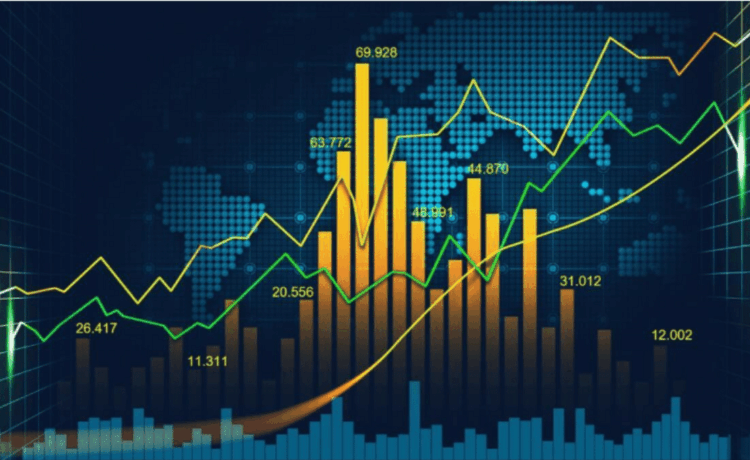In international trade, exchange rates play a critical role in determining the economic landscape of nations. The foreign exchange (forex) market, where currencies are traded, is pivotal to nations’ exports and imports. With an estimated daily trading volume exceeding $6 trillion, the forex market influences everything from business strategies to economic policies. Understanding how forex trading impacts exports and imports is essential for economists, businesses, and policymakers. This article explores the intricate relationships between forex trading, exchange rates, imports, and exports, providing insights into how fluctuations in currency value can influence global trade dynamics.
Understanding the Forex Market
Forex trading entails the buying and selling of currencies. It operates continuously, allowing participants to trade currencies in pairs, such as the Euro/Dollar (EUR/USD) or Dollar/Yen (USD/JPY). The forex market is primarily driven by supply and demand factors, central bank policies, and geopolitical events, impacting the value of each currency. As a decentralized market, forex transactions can occur through financial intermediaries or directly between parties. This accessibility allows businesses of all sizes to engage in currency trading for operational and speculative purposes.
Major Participants in the Forex Market
Central Banks: They play a predominant role in influencing currency value through monetary policy decisions. They may intervene in the forex market to stabilize their country’s currency or support economic objectives, such as controlling inflation.
Commercial Banks facilitate currency transactions for clients and themselves. Banks often trade significant volumes of currencies and may establish positions based on their economic outlook.
Corporations: Businesses involved in export and import rely on forex markets to manage currency exposure. International trade often necessitates currency exchange, causing businesses to engage in forex trading to secure favorable rates.
Investors and Traders: Individuals and entities that trade currencies speculatively aim to profit from exchange rate fluctuations. Their activities provide liquidity to the market, impacting exchange rates.
The Structure of the Forex Market
The forex market consists of several segments: spot markets for immediate trades, forward markets for trades to be settled in the future, and futures markets for standardized contracts. The market operates 24 hours a day, five days a week, enabling participants to react to real-time news, economic events, and geopolitical changes.
The Exchange Rate: A Crucial Component of Trade
An exchange rate is the price at which one currency can be exchanged for another. Rates fluctuate constantly based on market conditions. There are two primary rate regimes:
Floating Exchange Rates: Values fluctuate based on market forces without direct government or central bank intervention.
Fixed Exchange Rates: A currency’s value is pegged to another primary currency or precious metal, with the government intervening to maintain the peg.
Impact of Exchange Rates on Imports and Exports
Exchange rates dictate how much a country’s citizens must pay for imported goods and how much foreign buyers will pay for its exports.
Stronger Currency: A stronger currency means that imports become cheaper, making foreign goods more affordable for domestic consumers. However, it can make exports more expensive for foreign buyers, potentially decreasing demand.
Weaker Currency: A weaker currency has the opposite effect. It makes imports pricier, often leading to inflation, while making exports more competitive in global markets due to lower prices for foreign consumers.
The Role of Exchange Rates in Pricing
Exchange rates affect the immediate costs of goods and influence companies’ pricing strategies. For instance, businesses might adjust their pricing based on anticipated currency movements to maintain margins. A thorough understanding of forex fluctuations is vital for businesses to set competitive prices in foreign markets while assessing risk on their costs.
The Impact of Forex Trading on Imports
When a currency appreciates, it often benefits importers. Here’s how:
Lower Costs: An appreciating currency means that importers can purchase foreign goods for less. This could increase import volumes and give consumers greater access to international products. As import prices decline, domestic consumers may choose imported goods over local alternatives.
Increased Consumer Choices: Lower import costs may prompt retailers to expand product offerings, catering to varying consumer preferences and introducing new brands that were previously too expensive.
Conversely, currency depreciation can significantly impact import costs, typically leading to higher expenses for businesses and consumers alike:
Higher Costs: A weaker currency means higher import costs, as more domestic currency is needed to buy foreign goods. This can lead to diminished profit margins for businesses that rely on imported materials or products, contributing to inflationary pressures in the domestic economy.
Inflationary Implications: As prices for essentials like oil, electronics, or food staples rise due to increased import costs, consumers may face tighter budgets, prompting changes in spending habits. This inflation can necessitate adjustments in fiscal and monetary policies, as central banks may need to raise interest rates to combat rising prices.
The Impact of Forex Trading on Exports
When a currency depreciates, export industries often experience a notable boost:
Increased Competitiveness: A weaker currency reduces the price of exports in foreign markets. This can lead to higher demand, benefiting exporters and driving economic growth. The lower prices for foreign consumers may encourage purchasing from domestic exporters.
Boosting Local Economies: Increased export sales can generate additional employment in export sectors, contributing to local economic growth and supporting domestic industries.
Currency Appreciation and Its Challenges for Exports
Reduced Competitiveness: A stronger currency makes exports more expensive for foreign buyers. This can lead to decreased demand and lower sales volumes, adversely impacting various sectors reliant on international sales.
Long-term Consequences: Sustained appreciation can force exporters to seek higher efficiency, cut costs, or innovate to maintain competitiveness, potentially leading to reduced profit margins.
Illustrative Example: If the euro appreciates significantly against the US dollar, French wines or German automobiles become pricier for American consumers. This affects sales volume, with potential knock-on effects on employment in affected industries.
Volatility in Forex Markets: Uncertainty for Traders and Businesses
Currency values in the forex market can fluctuate wildly due to various factors, creating uncertainty for importers and exporters. Volatility can arise from:
Geopolitical Events: Shifts in political leadership, trade disputes, or international conflict can lead to rapid fluctuations in currency value. Events like elections, trade negotiations, or military conflicts have historically resulted in erratic forex movements.
Economic Data Releases: Important economic indicators such as employment rates, GDP growth, and inflation can lead to immediate reactions in the forex market. For instance, better-than-expected job growth figures can increase currency appreciation as investors anticipate stronger economic performance.
Macroeconomic Consequences of Forex Trading on Trade
The balance of trade—the difference between a country’s exports and imports—can be significantly influenced by forex trading and resultant exchange rate changes:
Trade Surplus: A country will have a trade surplus if its exports exceed imports. This is often supported by a weaker currency, making exports attractive.
Trade Deficit: Conversely, a trade deficit occurs when imports exceed exports. This is often exacerbated by a stronger currency, making buying foreign goods cheaper.
Policy Implications
Policymakers must consider the implications of forex trading on trade balances when formulating economic policy. Effective regulation and economic strategies may be needed to maintain balanced trade and address the adverse effects of significant currency fluctuations.
Central Bank Interventions: Central banks might intervene through interest rate adjustments and directly buying or selling currencies in the forex market to influence their values, maintaining competitiveness while preventing excessive volatility.
The Bottom Line
Forex trading is not merely a speculative activity detached from the real economy; it has profound implications for imports and exports. Currency fluctuations directly affect trade balances, influencing pricing, competitiveness, and cross-border demand for goods and services.
Understanding how forex trading impacts exports and imports is crucial for businesses engaged in international trade, policymakers overseeing economic stability, and consumers navigating the global market landscape. To thrive in an ever-changing forex environment, stakeholders must leverage strategies to manage currency risks effectively, ensuring they remain competitive and financially stable in an interconnected world.
As globalization continues to shape international trade dynamics, the importance of understanding the intricacies of forex trading will only grow, highlighting the need for ongoing education and adaptation within the global marketplace.
Moreover, the dynamic nature of the forex market necessitates that businesses keep abreast of geopolitical developments and economic indicators that may influence currency values. As countries develop diverse and interconnected economies, the relationships between currency values, trade policies, and international relations become ever more complex, underscoring the role of forex trading in shaping the future of global trade.
With the advent of cryptocurrencies and central bank digital currencies, the forex landscape is poised for transformation. Digital currencies can enhance the efficiency of cross-border transactions, potentially lowering costs and streamlining the settlement process. The impact of these changes on imports and exports is still unfolding, but they may introduce new dynamics in currency valuation and stability.
ThePrint BrandIt content is a paid-for, sponsored article. Journalists of ThePrint are not involved in reporting or writing it.



